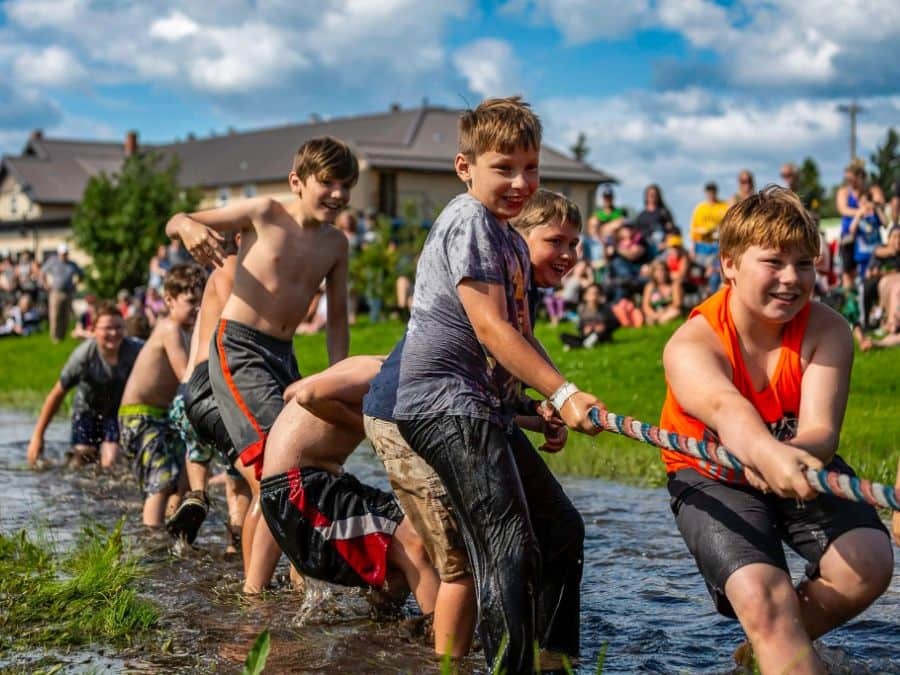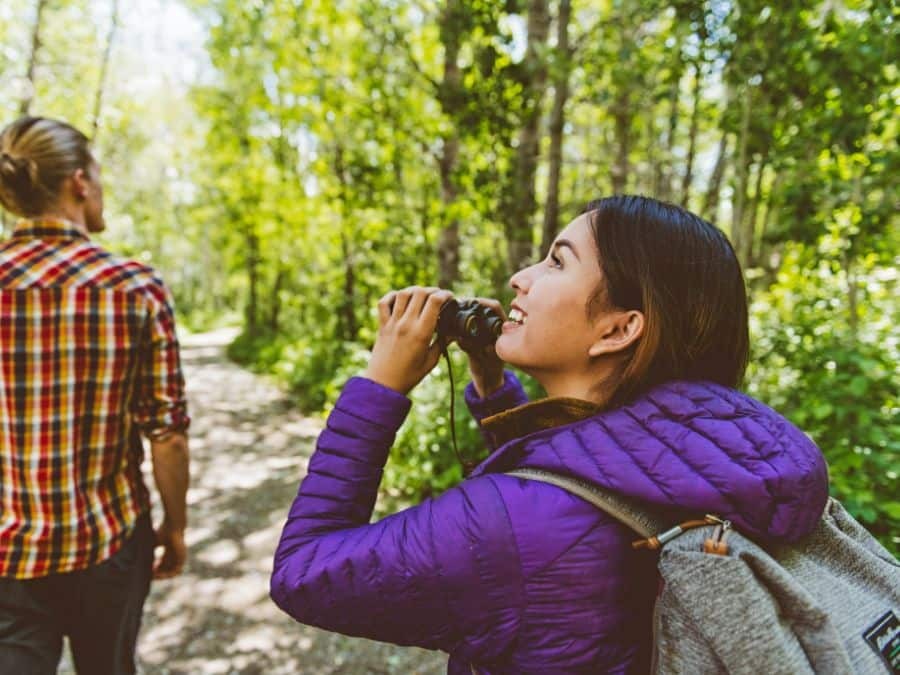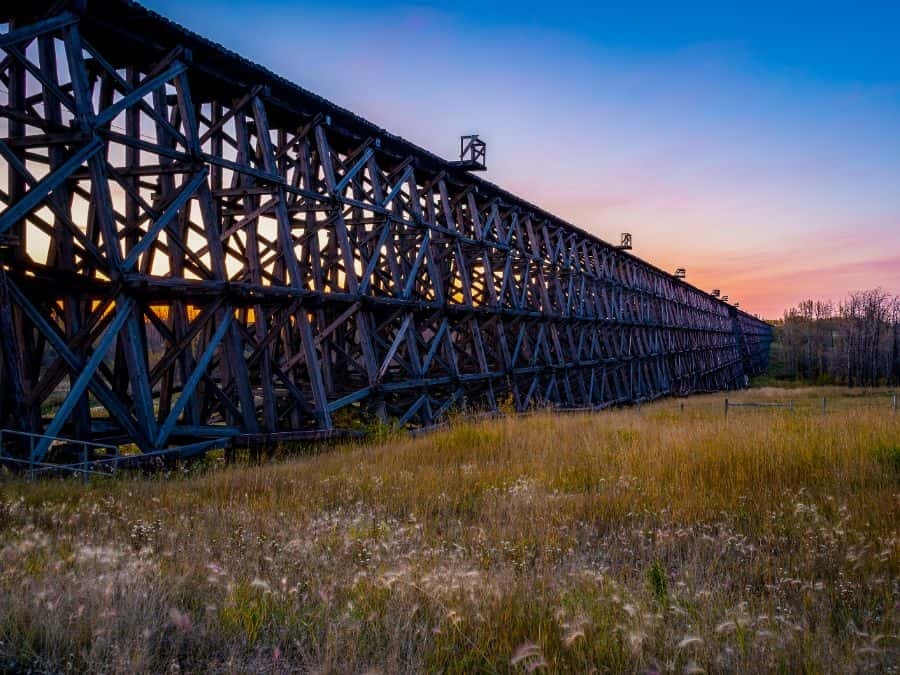
Parks & Open Spaces
Unique and unspoiled outdoor destinations
Explore an abundance of lakes, trails and wide open spaces just west of Edmonton.
Our parks and open spaces inspire locals and visitors alike to discover, value, protect and enjoy the natural world and the many benefits it provides. In addition to their value as pristine public-access areas, they provide significant habitat and landscape connectivity for wildlife as they live and move throughout the region.
Browse this page to get acquanited with our parks, lakes, protected sites and recreational areas. Whether you’re a day-tripper, seasonal adventure-seeker or new community member — all are welcome here. Let our world-renowned waters, endless windswept prairies and majestic timber trestle bridges transform you in ways that truly matter.
Provincial Natural Areas
Supporting a broad spectrum of recreational activities
Provincial natural areas are protected area lands that have been set aside to support a broad spectrum of recreational activities.
The majority of natural areas are small to medium sized properties. Users of these sites include hikers, bird watchers, equestrian users, naturalists, organized conservation groups and leaseholders. Many natural areas receive a high level of public use. This is particularly true for those located near urban centres, rural communities, acreages and rural subdivisions.

Isle Lake Natural Area
Location: Near Lake Isle
Covering 106 hectares on Isle Lake’s southern shore, this natural area consists of a mix of forest and wetlands. The lake is fed by the Sturgeon River and surrounding drainage basin.
Isle Lake Natural Area straddles Parkland and Lac Ste. Anne counties. The lake’s name refers to the presence of several islands. This site contains: reed grass wetlands near the lake shore; tamarack stands; tamarack-black spruce/Labrador tea/peatmoss muskeg; alder-birch shrubland; and upland mesic forests of balsam fir, aspen, balsam poplar and white spruce.

Lu Carbyn Nature Sanctuary
Location: Near Darwell
This quarter section of completely undisturbed Boreal forest and wetlands is home to a wide variety of wildlife, including moose, deer, coyote, beavers, lynx, cougars, and more than 95 bird species. The sanctuary is located close to the Lily Lake Natural Area, as well as to several other crown lands, significant lakes, natural areas and other protected lands.
The namesake for this sanctuary comes from renowned wildlife biologist and University of Alberta professor Lu Carbyn, who donated this land in 2017.

Bilby Natural Area
Location: South of Matchayaw Lake
Located just South of Matchayaw Lake, this nature trail is great for explore the variety of flora and fauna in this area. The trail is wide and well-worn with lots of beautiful tree and several small hills. The trail is not well-marked so it is recommended to download an offline GPS map to ensure you stay on route. The Western part of the loop reaches the Kilini Creek.
The north portion of this site is a narrow stretch of land along a bank of the Pembina River. Banks are steep and actively eroding. Vegetation is primarily dense shrub, second-growth aspen and sedge wetland.

Lily Lake Natural Area
Location: Near Darwell
This 172 hectare natural area west of Lac Ste. Anne occupies the northern, eastern and southern portions of Lily Lake. It is largely free of ATV tracks despite the existence of two distinct cutlines starting at Township Road 550 and heading south to Lily Lake. Little foot traffic is evident and the few trails follow a fence and end at a small prairie lake. The site is relatively pristine and remote.
The origin of the name is unknown, but it is presumed to be a reference to water lilies whose flowers and leaves float on the water surface in late spring and summer. Lily Lake Natural Area is an excellent location to practice snowshoeing – not too far off the beaten path.

Majeau Lake Natural Area
Location: Near Glenevis
This site features slightly undulating topography; upland aspen-balsam poplar forest; willow shrubland along stream; old open field reverting to shrubland and aspen forest; and black spruce/Labrador tea peatland.
George Pegg Botanic Garden
The George Pegg Botanic Garden sits on five hectares of land just north of the Hamlet of Glenevis. The site features a garden, several farmstead buildings, and a boreal mixed-wood forest.
Boasting a unique selection of herb, shrub, and tree species, the garden represents one of the finest small-scale collections of domestic and non-native plants in the province. The farmstead structures include a 1920s-era log home; granaries; a pumphouse; a windmill; and a weather station.
Other County Destinations and Experiences
Was this information helpful?
to Top



